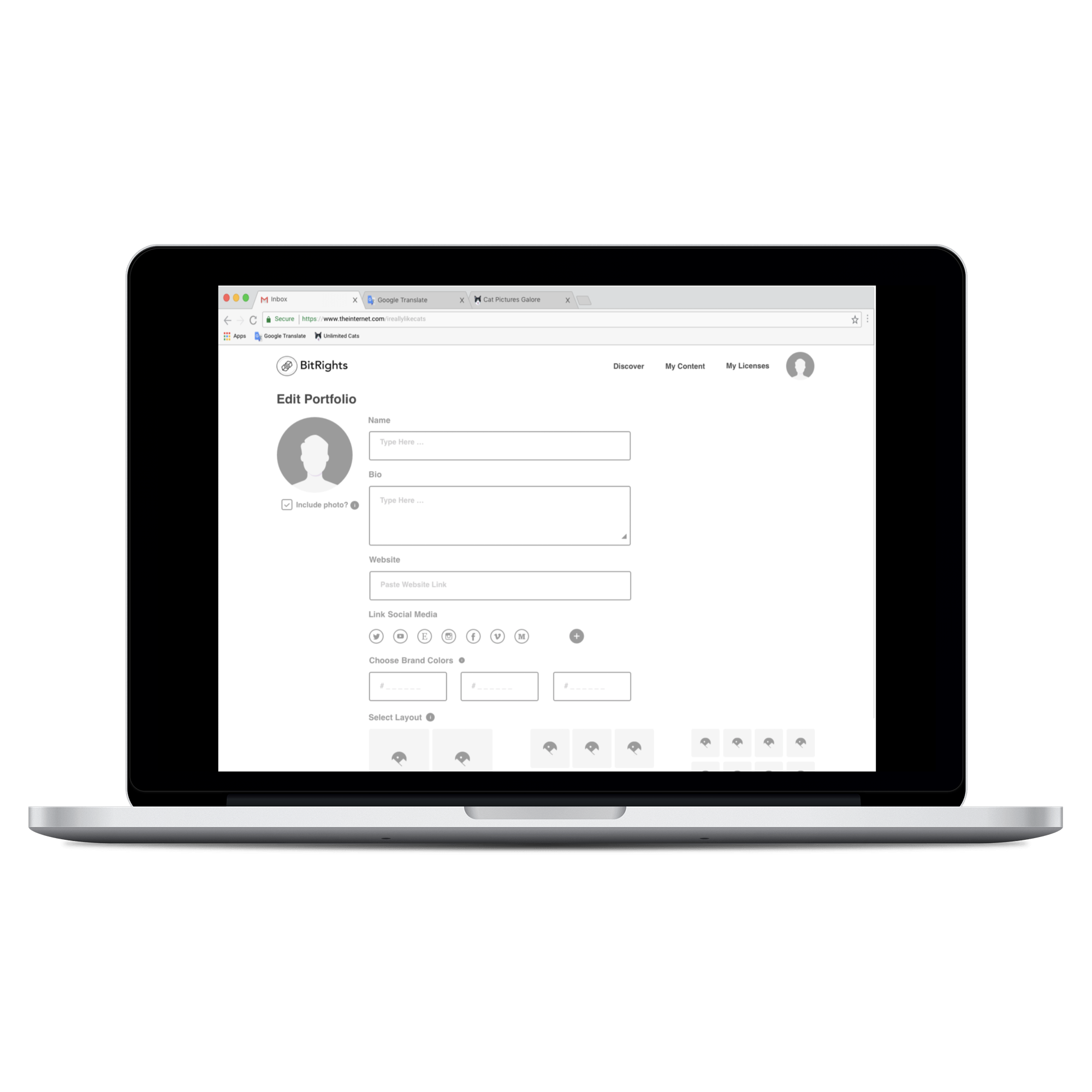BitRights - Needs Updating
This is a page description.
BitRights
THE CLIENT
An American publishing firm with 12,000+ employees
THE BRIEF
2020 was a year of unprecedented uncertainty. Many companies believed that their employees would be able to safely return to working in office by September. In service of this mission, a fellow Designer and I were asked to ideate, design, and propose a creative solution.
THE NITTY GRITTY
The solution in question needed to function in a fashion similar to existing hot desking platforms, with some COVID-19 era tweaks. Companies had the same amount of office space and employees, but now faced the limitations of 6-feet-apart and occupancy restrictions. We had to design an app that would allow employees to complete self health checks, reserve a desk within the office, and get notified of office hygiene.
Designed & Prototyped in Adobe XD —— Card sorting in Miro —— 1 month
Project Background:
Our client, BitRights, built a digital content licensing and analytics Web App that reduces frictions in creative content management. Their system allows content creators to register, license and monetize articles, photos, videos, music or any other piece of digital content. They came to us knowing that their product wasn’t as intuitive as it should have been and so they wanted our help. When we began working together, BitRights was a 2 week old beta product.
My team consisted of myself and 3 other UX Designers and we worked on this project from Nov 29 - Dec 17. In our initial meeting with the BitRights team we established what their goals and expectations were for us:
UX Team's research and designs will help inform future design decisions and functionality
Make the decision for content creators to choose BitRights over alternative options an obvious one by increasing the platform's desirability and ease of use
In our initial meeting, we also explained to our stakeholders that we would likely have to narrow our scope. In the time given, we knew we wouldn’t be able to redesign a product that would be suitable for “enterprises, creators, journalists, lawyers, talent managers, influencers, and more.“ By only focusing on content creators and their needs we knew that we would be able to build something great.
User Interviews:
We found users to interview using both a list provided for us by the BitRights team and our own respective networks. We aimed to interview content creators, as that seemed to be about 1/2 of the projected user base.
To begin, we drafted a user interview script. Our questions aimed to understand what people’s current behaviors are when it comes to digital content licensing. We wanted to understand why they were using the platforms they were using and what they liked or disliked about those platforms.
We conducted 6 user interviews. We found that the users’ average age was 36.5 years old. The users interviewed were 2 musicians, 2 photographers (1 professional and 1 hobbyist), a jingle producer, an executive producer, and a creative producer. 3 of the users were based in L.A. and 3 were based in NYC.
My team and I wrote everything we learned from user interviews on sticky notes to create an affinity map. This allowed us to identify trends in user responses and establish the following formula for understanding BitRights’ average user.
Meet Alex, the (average) BitRights user:
The following is Alex’s digital content licensing journey. She tries to license a photo she took of Mt. Fuji and, in the end, she is taken advantage of and signs a contract that relinquishes all of her rights to her own photo.
The Problem Statement:
When content creators want to license their work for commercial use, they encounter difficulties because they don’t fully understand the process, and/or the legal rights they have regarding ownership and terms of use. Alex is overwhelmed with the legal requirements necessary to grant rights to others for a photograph she took.
How might we help Alex navigate her way through the confusing journey of registering her content and issuing a license for a brand to use her work on her own terms?
Design Studio & Low-Fidelity Wireframes
We wanted to allow users to customize their public page.
Customization and a very creator-centric approach is the biggest differentiator between BitRights and their competitors.
We conducted 5 low fidelity usability tests. We asked them to complete 4 tasks but “clicking“ with their fingers through the paper prototype. Our findings:
3/5 users were not sure what to price the work that they are uploading.
3/5 users were not familiar with any terms and conditions that would pertain to content licensing and expressed that they would not know how what to put in that field.
3/5 users were confused as to why they were seeing both issued and acquires licenses. The users expressed that, as content creators, they do not sell their work and buy from others at the same time.
Our findings further confirmed our understanding of “the average BitRights user;“ we had to redesign a platform so that it is useful for the independent content creator with the needs of a professional.
Mid-Fidelity Wireframes
Mid-Fidelity prototype can be found here.
High-Fidelity Wireframes
High-Fidelity Prototype can be found here.
Next Steps:
At the time this assignment was completed, we presented our stakeholders with a list of next steps:
Test High(er) Fidelity Prototype
Mobile version of BitRights
Develop BitRights into a social platform
Conduct more user interviews
Develop a secondary persona
Create a portal for content buyers
Clarify "owner" vs. "creator"
Create infrastructure for content distribution









